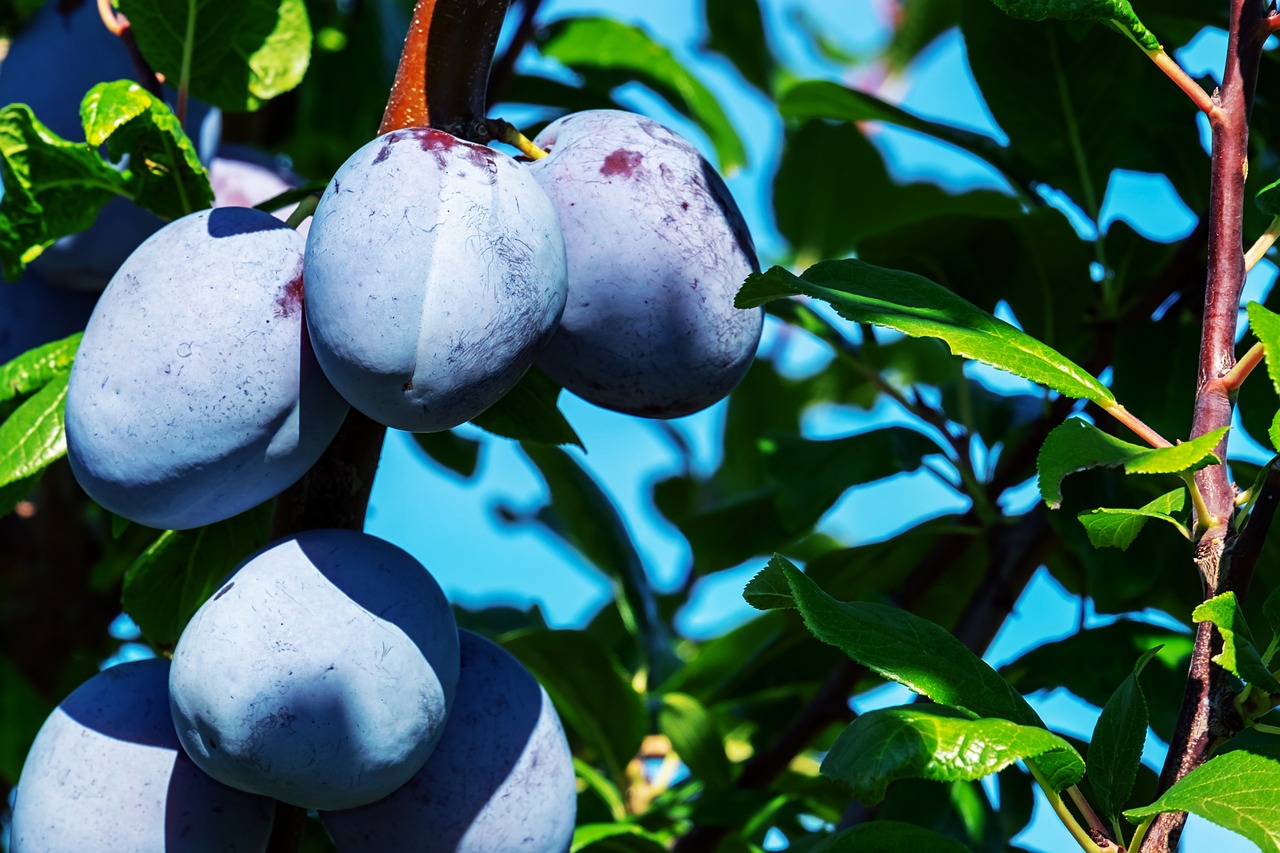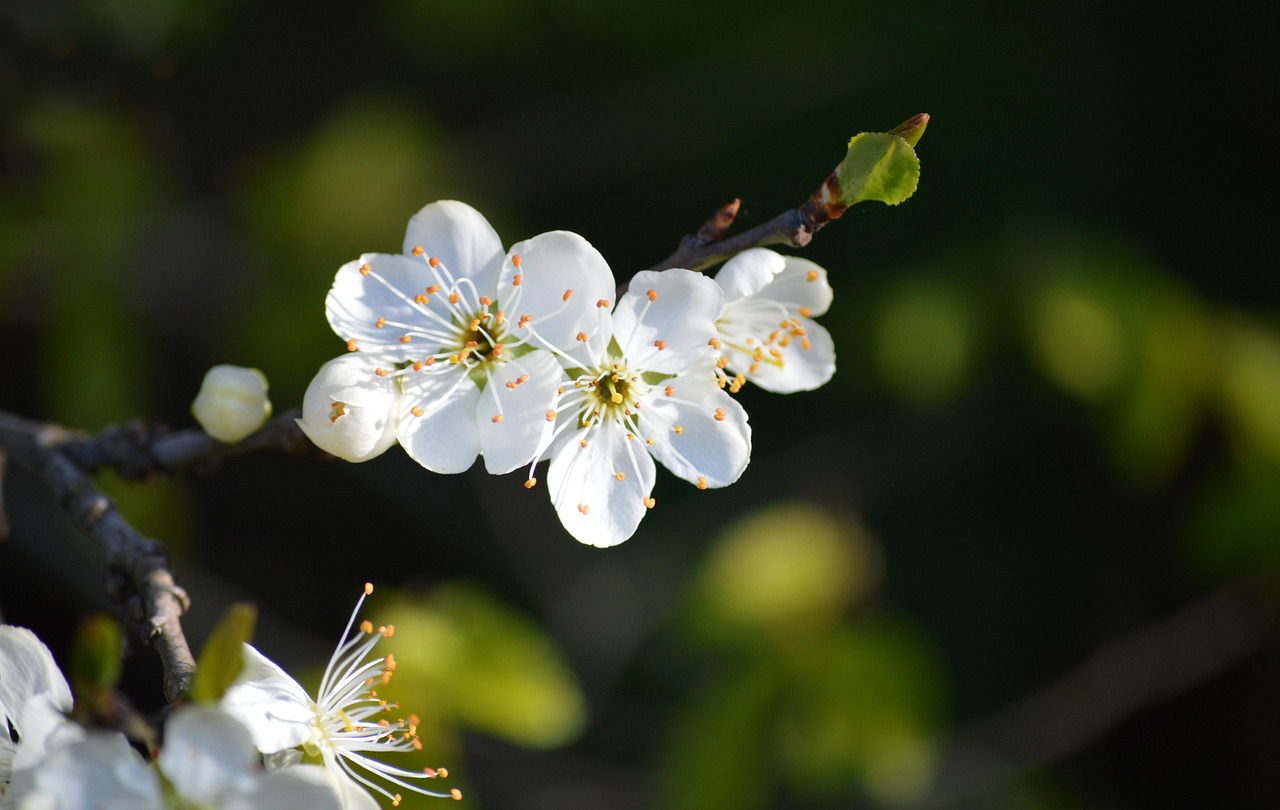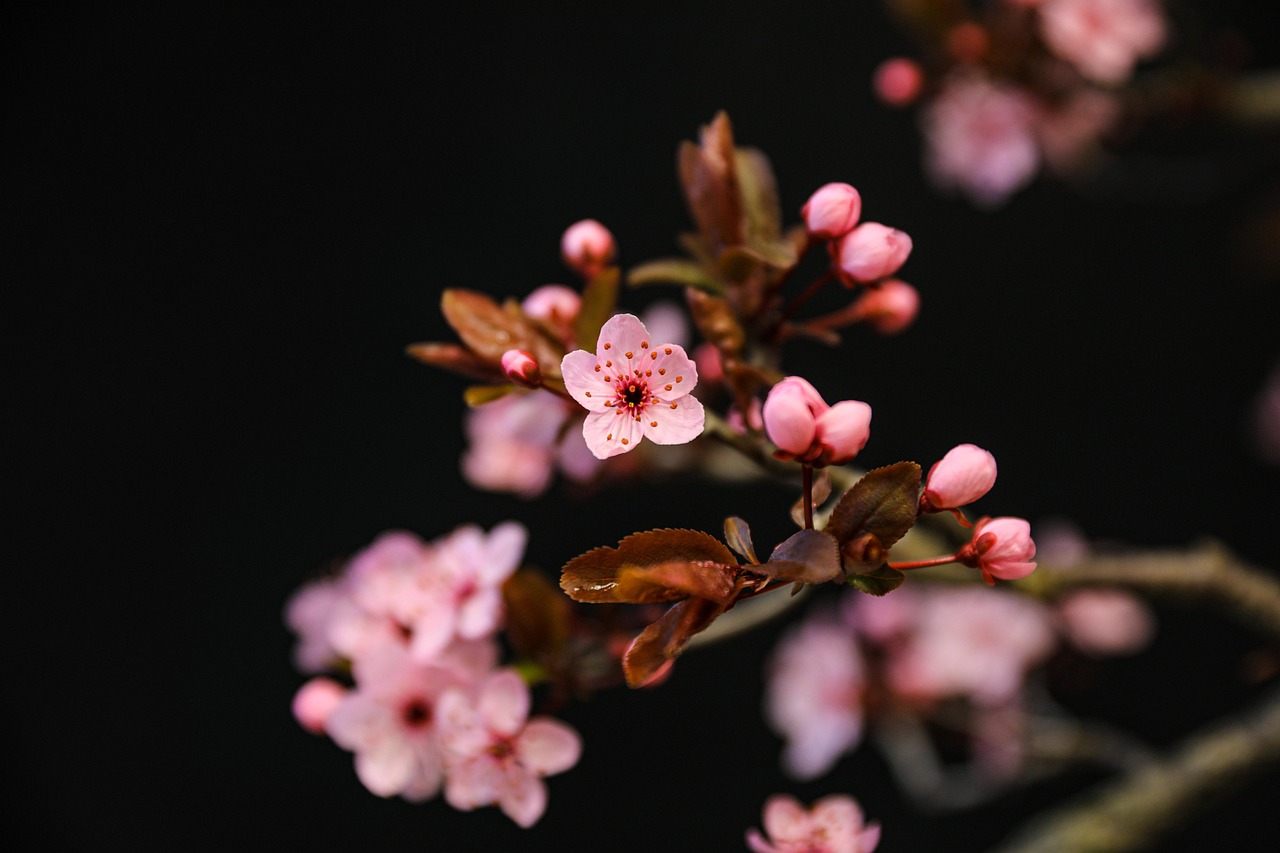Pruning Japanese plum trees is essential for promoting healthy growth and vibrant spring blossoms. Proper techniques enhance flower production, maintain tree shape, and prevent diseases. Timing and method are crucial for achieving the best results.
The Japanese plum tree, known for its stunning blossoms and delicious fruit, is a popular choice among gardeners. These trees are celebrated for their beauty in spring when they are covered in delicate pink or white flowers. To ensure these trees thrive and produce an abundance of flowers, regular pruning is necessary. Pruning not only shapes the tree but also encourages healthy growth and improves air circulation.

Understanding the right time and technique for pruning is key to maintaining a healthy Japanese plum tree. Generally, the best time to prune these trees is during late winter or early spring, just before new growth begins. This timing minimizes stress on the tree and allows it to focus energy on producing flowers and fruit.
Benefits of Pruning Japanese Plum Trees
Pruning offers several benefits that contribute to the overall health and appearance of Japanese plum trees. Here are some key advantages:
- Improved Air Circulation: Pruning allows better airflow through the branches, which helps reduce the risk of fungal diseases.
- Increased Sunlight Penetration: Thinning out dense areas of foliage ensures that sunlight reaches all parts of the tree, promoting even growth.
- Enhanced Flower Production: Removing old or weak branches encourages new growth, leading to more vibrant blossoms in spring.
- Better Shape and Structure: Regular pruning helps maintain a balanced shape, making the tree more attractive and easier to manage.
To achieve these benefits, it is essential to use the correct tools and techniques while pruning. The right tools can make a significant difference in the ease of pruning and the health of the tree.

Essential Tools for Pruning
Having the right tools is vital for successful pruning. Here is a list of essential tools you should consider:
- Bypass Pruners: Ideal for cutting small branches up to ¾ inch in diameter.
- Loppers: Suitable for thicker branches that are too large for pruners.
- Saw: A pruning saw is necessary for larger branches that require more cutting power.
- Hand Gloves: Protect your hands from cuts and scrapes while handling sharp tools.
- Tree Wound Sealant: Optional; can be used to cover cuts on larger branches to prevent disease entry.
Before starting the pruning process, ensure your tools are clean and sharp. Dull tools can cause damage to the tree and make it more susceptible to pests and diseases.
Pruning Techniques for Japanese Plum Trees
When it comes to pruning techniques, there are several methods to consider. Each technique serves a specific purpose, depending on the age and condition of your tree.

1. Thinning Out
This technique involves removing entire branches back to their point of origin. It helps reduce crowding and improves air circulation within the tree. When thinning, focus on removing branches that cross each other or grow inward.
2. Heading Back
Heading back involves cutting back the tips of branches to promote bushier growth. This technique is useful for younger trees that need to develop a strong framework. Make cuts just above a bud facing outward to encourage outward growth.
3. Cleaning
Cleansing involves removing dead, damaged, or diseased wood. This practice is crucial for preventing the spread of disease within your tree. Inspect your tree carefully and remove any unhealthy branches as soon as you notice them.

Timing Your Pruning Sessions
The timing of your pruning sessions can significantly impact the health of your Japanese plum tree. Pruning at the wrong time can lead to stress or reduced flower production. Below is a simple table outlining optimal pruning times based on the age of the tree:
| Tree Age | Optimal Pruning Time |
|---|---|
| Young Trees (1-3 years) | Late Winter to Early Spring |
| Mature Trees (4+ years) | Late Winter |
| After Fruiting Season | Summer (for light maintenance) |
This table provides a quick reference to help you determine when to prune based on your tree’s age. Remember that proper timing combined with appropriate techniques will yield the best results for vibrant blossoms in spring.
Common Mistakes in Pruning Japanese Plum Trees
While pruning is beneficial, many gardeners make mistakes that can harm their Japanese plum trees. Understanding these common errors can help you avoid them and ensure your tree remains healthy and vibrant. Below are some of the most frequent pruning mistakes:
- Pruning at the Wrong Time: Pruning too late in the season can remove flower buds, reducing blossoms. Conversely, pruning too early can expose the tree to winter damage.
- Over-Pruning: Removing too many branches can stress the tree and hinder its ability to produce flowers. It is essential to maintain a balance.
- Improper Cuts: Making cuts incorrectly can lead to disease entry points. Always cut at an angle and just above a bud to promote healthy growth.
- Neglecting Tree Health: Failing to assess the overall health of the tree before pruning can result in removing healthy branches or leaving diseased ones untouched.
Recognizing and avoiding these mistakes will help you achieve better results when pruning your Japanese plum tree.
Identifying Healthy and Unhealthy Branches
Knowing how to identify healthy versus unhealthy branches is crucial for effective pruning. Healthy branches are essential for the overall vitality of the tree. Here are some characteristics to look for:
Healthy Branches
- Color: Healthy branches typically have vibrant color, usually green or brown, depending on the season.
- Bark Condition: The bark should be intact and free from cracks or peeling.
- Buds: Look for plump and firm buds, which indicate good growth potential.
Unhealthy Branches
- Discoloration: Branches that appear gray or black might be dead or diseased.
- Brittleness: If a branch snaps easily when bent, it is likely dead. Healthy wood is flexible.
- Pests or Fungus: Signs of infestation or fungal growth are indicators of unhealthy branches.
By assessing the condition of your tree’s branches, you can make informed decisions about which ones to prune.
Pruning Techniques: Step-by-Step Guide
To help you effectively prune your Japanese plum tree, here is a step-by-step guide to follow. This process will make your pruning sessions organized and efficient.
Step 1: Prepare Your Tools
Ensure all your tools are clean and sharp before starting your pruning session. This preparation minimizes the risk of transferring diseases between plants.
Step 2: Assess the Tree
Take a moment to examine your tree from all angles. Identify areas that are overly dense or have unhealthy branches. Make notes about what needs to be pruned.
Step 3: Begin with Dead or Diseased Wood
Start by removing any dead, damaged, or diseased branches. Cut these back to healthy tissue or all the way to the trunk, depending on their condition.
Step 4: Thin Out Crowded Areas
Next, focus on thinning out areas where branches are overcrowded. Remove branches that cross each other or grow inward toward the center of the tree. This step increases airflow and sunlight penetration.
Step 5: Shape the Tree
After thinning, assess the overall shape of the tree. Make cuts to maintain a balanced shape, ensuring that the tree retains its natural form while promoting even growth.
Step 6: Clean Up
Once you’ve completed the pruning, gather all clippings and dispose of them properly. This practice helps prevent any potential diseases from spreading.
Post-Pruning Care
Caring for your Japanese plum tree after pruning is crucial for recovery and growth. Here are some tips to help your tree thrive post-pruning:
- Watering: Ensure your tree receives adequate water after pruning, especially if you prune during dry conditions.
- Fertilization: Consider applying a balanced fertilizer in early spring to provide nutrients that support new growth.
- Pest Monitoring: Keep an eye out for pests or signs of disease over the following weeks. Take action promptly if any issues arise.
- Avoid Heavy Foot Traffic: Limit foot traffic around the base of the tree to protect its roots during recovery.
Taking these steps will help your Japanese plum tree recover quickly from pruning and prepare it for a beautiful display of blossoms in the spring.
Common Pests and Diseases Affecting Japanese Plum Trees
Japanese plum trees, like all fruit trees, can be susceptible to various pests and diseases that may impact their health and productivity. Identifying these issues early is vital for effective management. Below is a list of common pests and diseases that affect Japanese plum trees.
Pests
- Plum Curculio: This beetle lays eggs in developing fruit, causing them to drop prematurely. Look for crescent-shaped scars on fruit surfaces.
- Aphids: These small green insects suck plant sap, weakening the tree and promoting sooty mold growth. Monitor for clusters on new shoots.
- Spider Mites: Tiny spider-like pests that thrive in dry conditions. They cause stippling on leaves and can lead to leaf drop.
- Scale Insects: These pests attach themselves to branches and stems, sucking sap and weakening the tree. They often appear as small, brown bumps on the bark.
Diseases
- Brown Rot: A fungal disease that affects blossoms and fruit, causing them to rot. Look for brown, mushy spots on fruits and wilted blossoms.
- Leaf Spot: Caused by various fungi, this disease leads to dark spots on leaves, which can eventually yellow and drop off.
- Black Knot: A fungal infection that creates black, elongated galls on branches. These galls can hinder growth and should be removed promptly.
- Crown Gall: Caused by bacteria, it results in abnormal growths on the roots or lower trunk, affecting water and nutrient uptake.
Recognizing these pests and diseases is crucial for maintaining the health of your Japanese plum tree. If you notice any signs of infestation or disease, take appropriate action immediately.
Pest and Disease Management Strategies
Effective management strategies can help control pests and diseases while minimizing harm to your Japanese plum tree. Here are several methods to consider:
Cultural Practices
- Regular Inspections: Frequently check your tree for signs of pests or diseases. Early detection is key to effective treatment.
- Proper Watering: Ensure your tree receives adequate moisture without overwatering, as excessive moisture can promote fungal diseases.
- Mulching: Apply mulch around the base of the tree to retain moisture and suppress weeds, which can harbor pests.
Organic Control Methods
- Insecticidal Soap: Use this product to control soft-bodied insects like aphids and spider mites. Spray directly on affected areas.
- Nematicides: For root-knot nematodes, consider applying nematicides to manage their population effectively.
- Neem Oil: This natural pesticide can deter various pests while being safe for beneficial insects when applied correctly.
Chemical Control Methods
If organic methods do not yield satisfactory results, you may need to resort to chemical treatments. Here are some options:
- Fungicides: Use fungicides specifically designed for fruit trees to combat diseases like brown rot and leaf spot. Always follow the manufacturer’s instructions for application rates and timing.
- Pesticides: Apply pesticides labeled for use on plums to control specific insect pests. Timing applications according to pest life cycles improves effectiveness.
Preparing for Spring Blossoms
As spring approaches, taking steps to prepare your Japanese plum tree will ensure it is ready to produce vibrant blossoms. Here are some tips for preparation:
Soil Management
The health of your soil directly impacts tree growth and blossom production. Consider the following practices:
- Soil Testing: Conduct a soil test to determine pH levels and nutrient content. Adjustments may be necessary based on the results.
- Add Organic Matter: Incorporate well-rotted compost or aged manure into the soil to improve fertility and structure.
Water Management
Maintaining proper moisture levels is essential as buds begin to swell in early spring. Here are some practices:
- Irrigation: Ensure consistent moisture leading up to blooming. Deep watering encourages healthy root development.
- Avoid Overwatering: Prevent waterlogging by ensuring proper drainage around the tree’s root zone.
Pest Prevention
Implementing preventive measures before blooming begins is wise. Consider these steps:
- Cleansing the Area: Remove any fallen fruit or debris from around the tree base to minimize pest habitats.
- Applying Dormant Oil: In late winter or early spring, consider applying dormant oil to suffocate overwintering pests.
By preparing your Japanese plum tree well ahead of blooming, you can enhance its growth potential and encourage a beautiful display of blossoms come springtime.
Enhancing the Aesthetic Appeal of Your Japanese Plum Tree
In addition to promoting healthy growth and vibrant blossoms, proper pruning and care can significantly enhance the aesthetic appeal of your Japanese plum tree. Here are some additional tips to consider that focus on the visual aspects of your tree:
Choosing the Right Location
The location of your Japanese plum tree plays a vital role in its overall health and appearance. Consider the following factors when selecting a spot:
- Sunlight: Plant your tree in a location that receives full sun for at least six to eight hours daily. This exposure ensures optimal flowering and fruiting.
- Space: Ensure there is adequate space around the tree for air circulation. Avoid planting too close to other trees or structures that could obstruct light.
- Soil Quality: Choose a well-drained area with fertile soil to support strong growth and vibrant blossoms.
Seasonal Care
Seasonal care routines can also enhance the visual appeal of your tree throughout the year. Here are some recommendations:
- Spring: As blooms appear, ensure regular watering and monitor for pests. The beauty of spring blossoms can be breathtaking, so don’t forget to enjoy the view!
- Summer: Keep the area around the tree clean and free from weeds. Weeds can detract from the tree’s appearance and compete for nutrients.
- Fall: After harvest, clean up fallen leaves and fruit. This practice not only maintains aesthetics but also helps prevent diseases.
- Winter: Protect your tree from harsh winter conditions with mulch and wraps if necessary. This care keeps the tree healthy and ready for the upcoming growing season.
Creating a Companion Garden
Another way to enhance the visual appeal of your Japanese plum tree is by creating a companion garden. Thoughtfully chosen plants can complement the beauty of your tree while attracting beneficial pollinators. Consider these options:
- Flowering Plants: Incorporate perennials like daylilies or lavender that bloom alongside your plum tree, creating a colorful display.
- Ground Covers: Use ground cover plants such as creeping thyme or clover to fill in space around the tree base, providing a lush green backdrop.
- Herbs: Growing herbs like basil or rosemary nearby can enhance both aesthetics and functionality, as they attract pollinators and deter pests.
A companion garden not only beautifies your landscape but also creates a habitat for wildlife, enhancing biodiversity in your yard.
Final Thoughts
Caring for your Japanese plum tree through proper pruning, pest management, and seasonal care is essential for achieving vibrant spring blossoms and maintaining its overall health. Remember the importance of timing when pruning, as this impacts the tree’s ability to produce flowers effectively.
Regular inspections for pests and diseases will help you stay ahead of any issues that may arise. Implementing cultural practices and preventive measures ensures your tree remains vigorous throughout the growing season. Additionally, thoughtful landscaping around your plum tree can create a stunning focal point in your garden.
By following these guidelines, you can enjoy a flourishing Japanese plum tree that not only produces beautiful blossoms each spring but also enhances the beauty of your outdoor space year-round. Embrace the journey of nurturing your tree, and it will reward you with bountiful blooms and delicious fruit for years to come.
